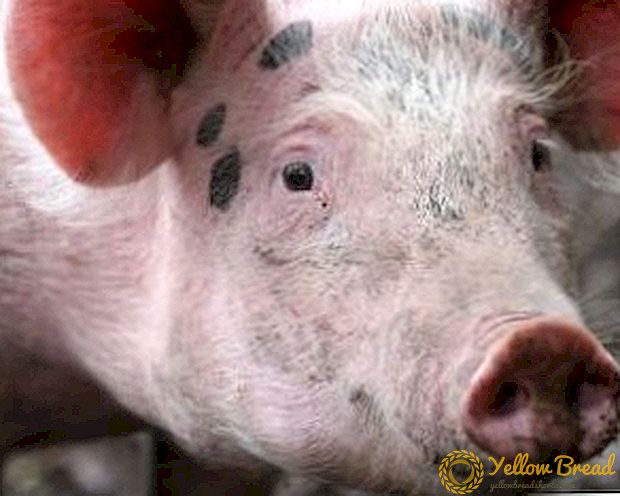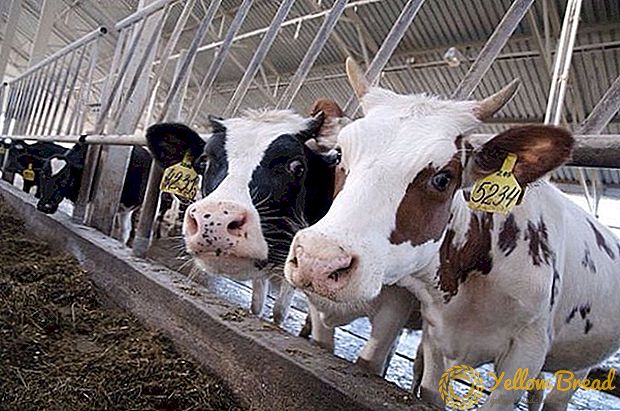 Growing pork at home is not only profitable, but also quite interesting. But, as in any business, you must first familiarize yourself with the subtleties and nuances of the process. Very often, farmers are faced with various diseases of the population, one of them is parakeratosis of piglets.
Growing pork at home is not only profitable, but also quite interesting. But, as in any business, you must first familiarize yourself with the subtleties and nuances of the process. Very often, farmers are faced with various diseases of the population, one of them is parakeratosis of piglets.
- Description and pathogen
- Causes of manifestation
- Symptoms and course of different forms
- Sharp
- Subacute
- Chronic
- Diagnosis
- Treatment
- Prevention of parakeratosis
Description and pathogen
Parakerotosis - what is it and how does the disease arise, we will now find out.
The disease occurs mainly in young animals, and is characterized by a lack of vitamins and minerals in the body of piglets, especially zinc.  This disease is endemic, that is, characteristic of a particular locality and associated with a deficiency or excess of mineral resources.
This disease is endemic, that is, characteristic of a particular locality and associated with a deficiency or excess of mineral resources.
Causes of manifestation
The etiology of parakeratosis in piglets is complex and consists of:
- poor or inadequately balanced diet with low or no zinc, as well as its poor absorption;
- excess calcium;
- lack of vitamin A, which is responsible for the absorption of nutrients.
 But the main and most weighty cause of the disease lies precisely in the lack of zinc. This microelement is vital for young individuals: at the expense of it the animal grows and develops correctly. Liver disease is also associated with zinc, more precisely, its deficiency, which subsequently leads to parakeratosis.
But the main and most weighty cause of the disease lies precisely in the lack of zinc. This microelement is vital for young individuals: at the expense of it the animal grows and develops correctly. Liver disease is also associated with zinc, more precisely, its deficiency, which subsequently leads to parakeratosis. Symptoms and course of different forms
There are 3 different forms of this disease.: acute, subacute and chronic. Despite the fact that the symptoms are almost the same, the disease proceeds differently depending on the diagnosis. Consider in more detail the form of parakeratosis.
Sharp
In this case, the disease affects a large number of piglets: we are talking about pigs aged 1-2 months. In animals, appetite decreases, lethargy, depression and diarrhea appear.
The skin of the animal is covered with pink spots - most often on the abdomen, thighs, behind the ears, but may be present on other parts of the body.  In the course of the disease, the spots darken and turn burgundy with a bluish tinge, then dermatitis comes to replace the spots, which affects almost the entire body of the piglet, covering it with brown crusts, often the limbs suffer, which adds to the main symptoms limp and tremor.
In the course of the disease, the spots darken and turn burgundy with a bluish tinge, then dermatitis comes to replace the spots, which affects almost the entire body of the piglet, covering it with brown crusts, often the limbs suffer, which adds to the main symptoms limp and tremor.
On average, the disease lasts for 2 weeks, sometimes it can last up to 20 days.
Subacute
The subacute form of pig parakeratosis is less pronounced, the symptoms are not as pronounced as in acute. Most often, animals suffer from the disease at the age of 2-3 months. The disease lasts for a month, sometimes even 40 days. 
Chronic
The symptoms of the chronic form coincide with the symptoms of the acute form of the disease, but proceed less clearly: the body temperature of the animals does not rise, and, for example, the level of protein in the blood decreases. Spots and itching appear only if the disease is running.  To determine that the animal is sick, in this case, it is possible with the appearance of lethargy and poor appetite of a pig.
To determine that the animal is sick, in this case, it is possible with the appearance of lethargy and poor appetite of a pig.
Diagnosis
First of all, the doctor excludes other diseases that are accompanied by dermatitis of the skin.The diagnosis of "parakeratosis" is made on the basis of a study of the feed, which the animal consumed, chemical analysis of blood for zinc, calcium, protein and vitamin A.  Also on the basis of visible signs - characteristic spots or crusts on the body of the animal.
Also on the basis of visible signs - characteristic spots or crusts on the body of the animal.
Treatment
The piglet was covered with red spots, and the veterinarian in the course of comprehensive studies found that it is parakeratosis - more should immediately begin treatment.  The most effective are intramuscular injections of a 5% solution of zinc sulfate and vitamin A at the rate of 1 mg of the drug per kg of animal body weight. With this therapeutic treatment, the symptoms disappear after 4-5 days, and the pig is recovering.
The most effective are intramuscular injections of a 5% solution of zinc sulfate and vitamin A at the rate of 1 mg of the drug per kg of animal body weight. With this therapeutic treatment, the symptoms disappear after 4-5 days, and the pig is recovering.  Oral medication is also possible - such treatment is considered to be longer. Due to the fact that the drugs are sufficiently long absorbed in the intestine, and the results of therapy are visible only for 10-15 days.
Oral medication is also possible - such treatment is considered to be longer. Due to the fact that the drugs are sufficiently long absorbed in the intestine, and the results of therapy are visible only for 10-15 days.
Prevention of parakeratosis
To avoid this disease, it is necessary to provide a balanced diet for livestock.  You should regularly check the feed for zinc, calcium and vitamin A content, take into account the peculiarities of the area where animals are raised.
You should regularly check the feed for zinc, calcium and vitamin A content, take into account the peculiarities of the area where animals are raised.
If the pigs are still sick, immediately contact the experts. Timely diagnosis and proper therapeutic treatment will help to quickly defeat parakeratosis.






